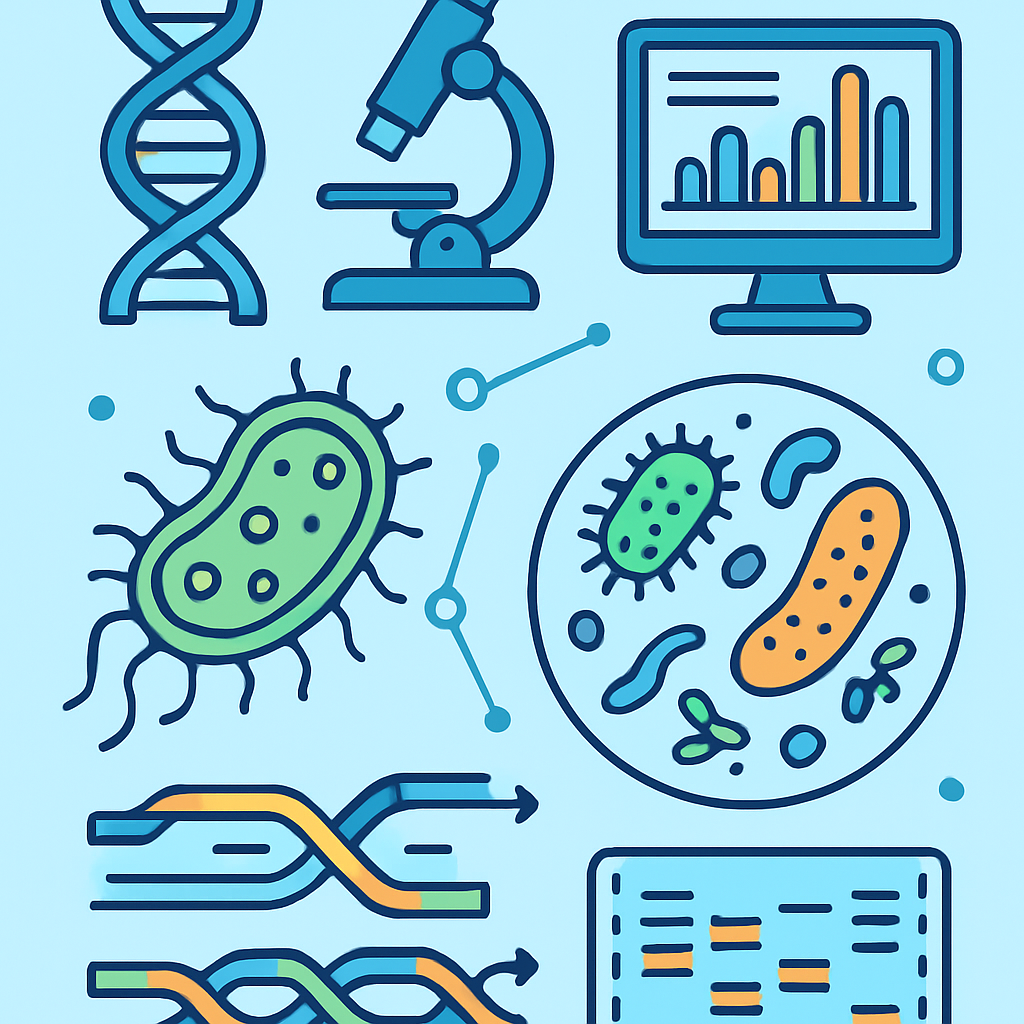Do All Animals Have a Microbiome? A Research Guide
From the guts of elephants to the tissues of coral reefs, scientists are uncovering a hidden yet essential world: the animal microbiome. As research...
3 min read
 Manoj Dadlani
:
Jul 7, 2025 11:37:50 AM
Manoj Dadlani
:
Jul 7, 2025 11:37:50 AM

Have you heard of microbiome targeted sequencing? It’s a powerful tool for understanding the world around us, and it is becoming increasingly popular in the medical community.
Microbiome targeted sequencing is a process that uses DNA sequencing to identify specific microbial communities in different environments. By targeting these microorganisms, scientists can better understand how they interact with their environment and what effect they have on human health.
In this article, we will explore what microbiome targeted sequencing is, how it works, and why it’s so important for research today.
Targeted microbiome sequencing is the selection and isolation of genetic region(s) of interest before sequencing to illustrate the genetic variation between the samples within the target region.
What this essentially means is that targeted sequencing could capture the genetic variation of microbial communities within a known genetic region which can then be compared between samples.
A common sequencing target gene is the 16s rRNA gene. The gene is ubiquitously conserved in bacteria, yet it contains multiple variable regions that allows for the ability to identify and quantify the various bacteria within each sample. Another commonly used region for sequencing is the Internal Transcribed Spacer (ITS) region, which allows for the profiling of fungal organisms, such as the 16s rRNA gene region does for bacterial organisms.
By utilizing targeted sequencing technology for microbiome samples, one can achieve a detailed and accurate profile with minimal sequencing data. This is because rather than sequencing the entire genetic content of a sample, only specific regions that are informative and relevant are targeted for sequencing and analysis.
Enrichment steps are essential for targeted sequencing to work. To enrich the target region contained in the sample, the target region is amplified with target sequence-specific primers. After amplifying the target region, the nucleic acid is then prepped and analyzed via Next-Generation Sequencing.
This provides an accurate and specific profile of the variation within the target region for each sample. These profiles can then be compared between samples to find patterns in microbiome signatures related to your specific scientific question.
When choosing the gene region of interest for your research, a few factors need to be considered:
One you’ve chosen your target region, either PCR primers specific to the target region could be designed and the target region could be amplified, or target region probes that could hybridize with the target sequence could be used to capture and filter the target region from the genetic material. Once this has been performed, genetic material from the target region will then be cleaned up and used for downstream prep and sequencing.
After amplification and library preparation, samples are loaded into Next-Generation Sequencers to generate sequenced data for analysis. Depending on the target region of interest, the read length generated on these sequencers can be adjusted to capture greater variability within the region. Typical read lengths for targeted sequencing are either 250bp or 300bp, and are most commonly sequenced using the Illumina MiSeq platform.
Whatever your research, CosmosID’s Microbiome HUB can help. As a state-of-the-art microbial sequencing platform, our sequencing technologies and services provide industry-leading insights into the microbial composition of your sample.
We are also committed to providing you with the best customer service and support possible to ensure that you get the most out of our platform. At Cmbio, we work hard to help you make the most of your research and truly unlock the power of the microbiome.
For your NGS and targeted sequencing service needs, please contact us today!
Whole genome sequencing involves sequencing the entire organism or sample’s DNA, while Targeted Sequencing specifically targets certain regions within the genome.
From the gut microbiome and the wider human microbiome to environmental and crop-based microorganisms, Targeted Sequencing not only provides a view of the genetic variation between samples, but also provides the ability to sequence only the genetic regions your research cares about, which is useful in samples that have high amount of non-target DNA (such as skin, blood, etc). This can offer applications across clinical, biological, environmental, and many more settings.
Targeted Metagenomic Sequencing is a method of sequencing genetic material from an environment or microbial community in order to study the species present, their functions, and interactions. This involves sequencing the DNA region from organisms belonging to different taxonomic groups, usually focusing on specific genes.

From the guts of elephants to the tissues of coral reefs, scientists are uncovering a hidden yet essential world: the animal microbiome. As research...

Welcome to the exciting world of metagenomics!Metagenomicsis a powerful tool that allows us to study complex microbial communities in their natural...

Back in 2020, the height of the COVID-19 pandemic brought increased attention to mental health and its related disorders. Mental health issues were...